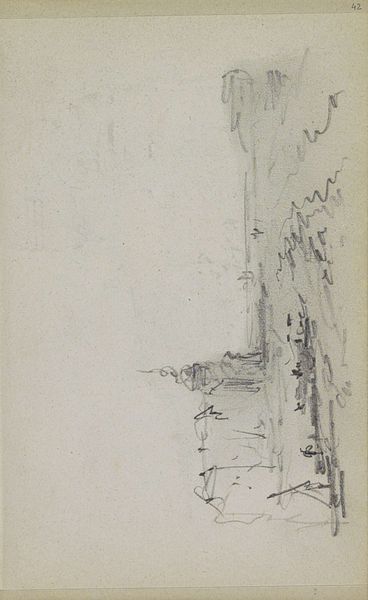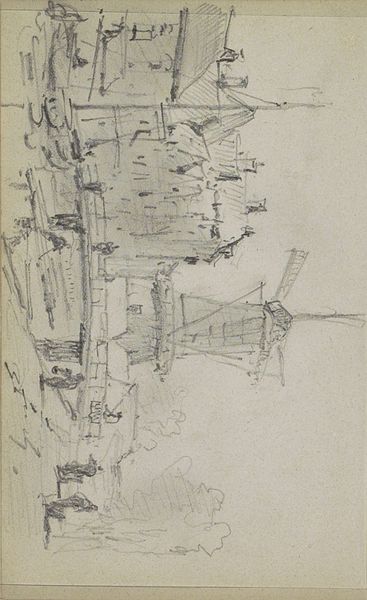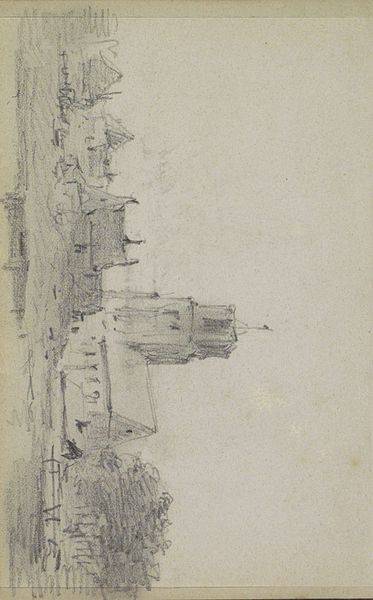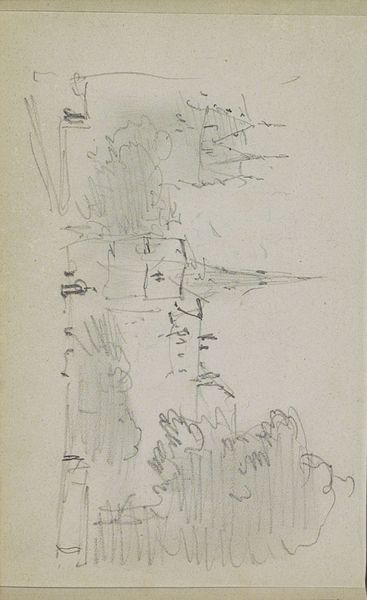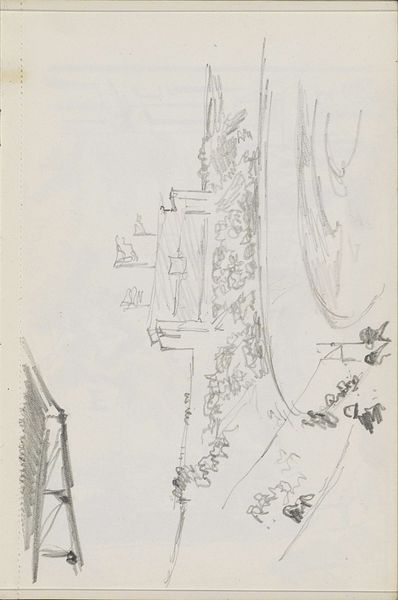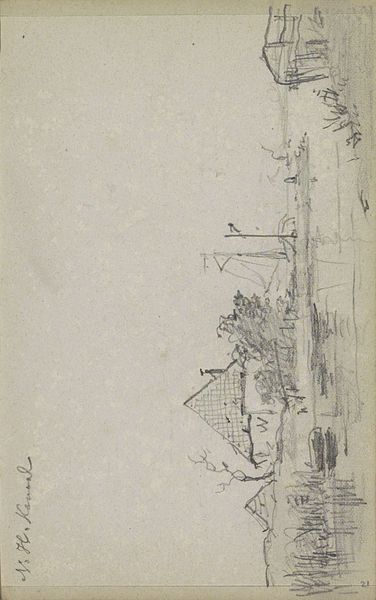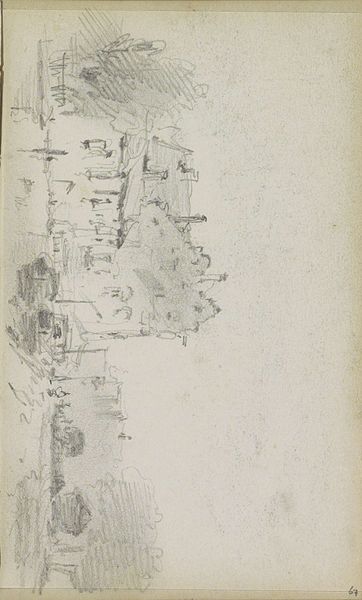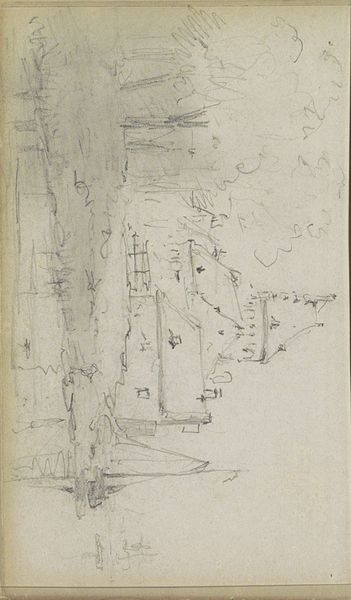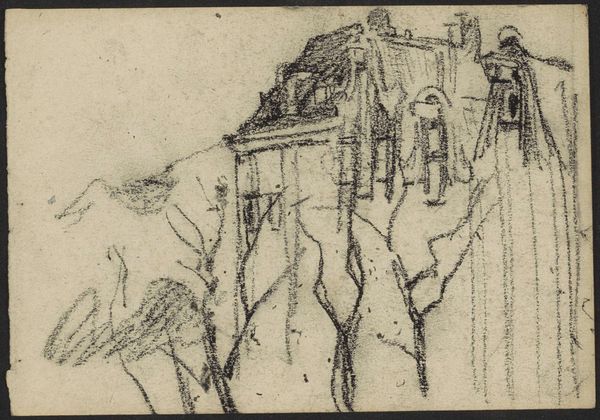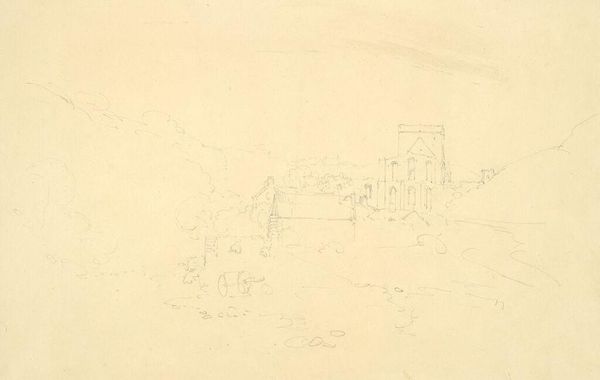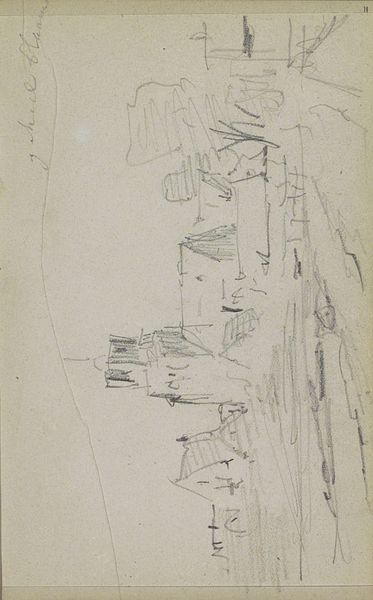
drawing, pencil
#
drawing
#
impressionism
#
pencil sketch
#
landscape
#
charcoal drawing
#
pencil
Copyright: Public domain
This is Van Gogh’s sketch, Ruins of Montmajour. A rather monochromatic work, it's rendered with delicate strokes of graphite. The ruins rise ethereally, a monument to time's relentless march. Look closely at how Van Gogh uses line and form to represent architectural decay. The structure itself appears to be dissolving, the weight of history pressing down. This disintegration of form speaks not only to the physical decay of the ruins, but to a broader philosophical commentary on transience and impermanence. Van Gogh destabilizes the traditional grandeur associated with architectural subjects. Consider also the implications of his use of medium. Graphite, with its capacity for both precision and atmospheric smudging, becomes a perfect tool for conveying this sense of decay. Van Gogh challenges fixed meanings, engaging with new ways of thinking about space, perception, power and representation. This challenges our understanding of form, decay, and representation, inviting us to consider art as a dynamic, ever-evolving dialogue.
Comments
No comments
Be the first to comment and join the conversation on the ultimate creative platform.
